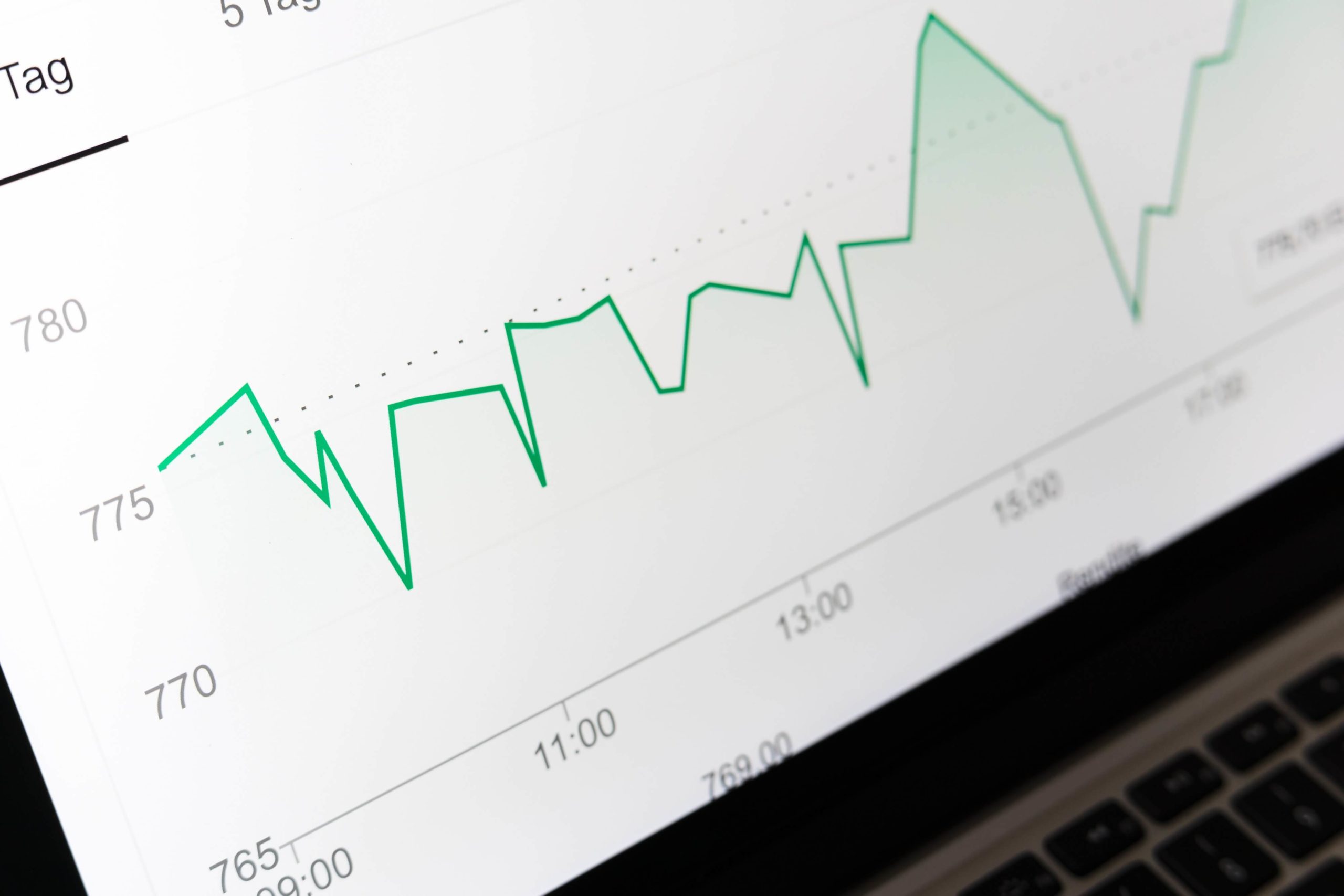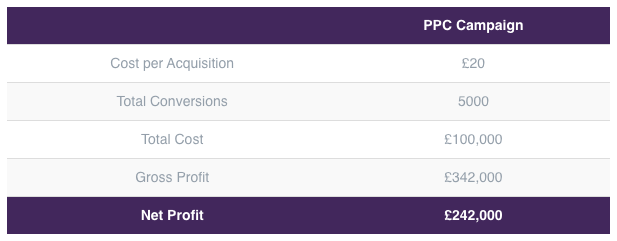
This multi-part blog is all about PPC Lifetime value and how to use it – both to measure and optimise PPC campaign performance.
In part 1, we looked at what Lifetime value is, including some guidance on how to calculate it and also how to use it to measure PPC and other marketing performance. You can view part 1 here – Introduction to using LTV for PPC.
In this part we’re going to focus on how using lifetime value can impact PPC performance and particularly when compared to CPA based optimisation.
In part one of this blog post we used an example below:

Let’s imagine that in the example above, the PPC cost per acquisition target was £20. Based on that target, here are the (made up) figures from last month:

This looks fairly healthy. It is certainly true that the PPC campaign above is making a profit. The £20 CPA target may seem like a sensible strategy. “We make about £70 profit from each customer – if we only pay £20 for each new customer we’re making a healthy £50 per customer”.
However there are a number of problems with optimising a PPC campaign to a £20 CPA target.
Mainly – how do you know you are making the maximum profit when the CPA is £20? What if you could double sales with a £25 CPA? What if you could still get 90% of your sales with a £15 CPA?
The problem is knowing the “optimum CPA for maximum profit”. Is it lower or higher than £20? If you test different CPA targets, you will find that profit varies and that some are more profitable than others.
“What is the optimum CPA for maximum profit?” is the wrong question. The real question is “how much profit can we make from our PPC campaign?”
We can calculate the profit from the PPC campaign using the following formula:
Total Profit = Number of conversions* (Lifetime Value – PPC Cost per Acquisition)
However, Cost per acquisition and Number of conversions are directly linked to each other:
Cost Per Acquisition = Cost Per Click * Conversion Rate (rate from click to conversion)
Number of conversions = Clicks * Conversion Rate (rate from click to conversion)
So finally:
Total Profit = Clicks * conversion rate * (LTV – (CPC*Conversion rate))
Using this equation to optimise the PPC campaigns, means that we are trying to find a balance between the volume of clicks and the cost per click (CPC) to deliver the maximum profit.
Here is an example to illustrate how this might work on 4 different keywords in a PPC search campaign.

You can see that all of the keywords are at or below the £20 CPA target. The average for these three keywords is £16 and the total profit is £1,672.20.
All PPC is conducted on an auction basis – the more you bid, the more you pay for each click and the more traffic you get.
The result is that economies of scale work in reverse when it comes to PPC. Unlike everywhere else, the more you buy, the lower the ROI (all other things remaining equal).
So if you increase the CPC, you increase the CPA and conversions and reduce ROI. If you reduce the CPC, you reduce the CPA and conversions but increase ROI.
This means that if you draw a graph of CPC and Clicks it might look something like this:

This is only an example, and will vary massively keyword-by-keyword, but it is generally correct. There is a sharp increase in traffic at the point the CPC hits the first page bid and then increases as you increase your average position on the page. The benefit from increasing the bid usually decreases as you get nearer the top – generally you are pay a lot more to always be in position 1 compared to being in position 1 most of the time.
If we look at the keywords in the table above and compare them to the graph, you will start to see how the average position of the keywords relates to their future potential when it comes to generating profit.
Just as a recap here is the original table:

Let’s imagine a series of bid changes based on LTV profit calculations:

Because we are confident in our LTV calculation, which has been done as accurately as possible and is conservative (as explained in part 1 of this blog post), the only figure we have to look at is the profit.
The profit here has increased by 60%.
Keyword B is a highly competitive, high volume keyword that was languishing in position 5.3. By increasing the Cost per click considerably, we have pushed this keyword up to position 3.2, gained significantly more traffic and clicks. All we really need to say though is that it made 10X more profit.
Keyword A’s CPC has been increased by 50%, resulting in a 30% increase in clicks and 25% more profit.
Keyword D’s CPC has been decreased by 25%, without any impact on the number of conversions resulting in a 10% increase in profit.
Clearly the CPA of £20 for this account was too low – as you might expect when the lifetime value is £68.40.
If you force every campaign element to maximise everything to £20, you not only miss out on profitable traffic as with keyword B, but also push keywords too hard like keyword D, where it is better to reduce the bids to maximise profit.
This is a completely made up example but hopefully highlights the benefits of using LTV over CPA when it comes to optimising PPC campaigns.
Finding the optimum CPA is dependent on the different traffic volumes and cost per click combinations and is unique to each auction.
I hope you found this article interesting and it would be good to get any feedback.